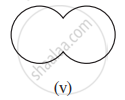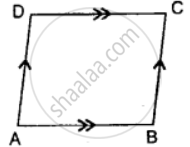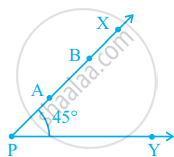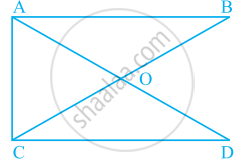Advertisements
Advertisements
प्रश्न
In the given figure, PQRS is an isosceles trapezium. Find x and y.

उत्तर
Given,
PQRS is an isosceles trapezium
PS = RQ (Given)
= ∠P + ∠S = 180°
(Sum of adjacent angles are supplementary)
= 2x + 3x = 180°
= 5x = 180°
= x = `180^@/5`
= 36°
∵ ∠P = ∠Q
∵ PS = RQ
= 2x = y
= 2 × 36 = y
= y = 72°
APPEARS IN
संबंधित प्रश्न
Given here are some figures:
 |
 |
 |
 |
 |
 |
 |
 |
Classify each of them on the basis of the following:
- Simple curve
- Simple closed curve
- Polygon
- Convex polygon
- Concave polygon
How many diagonals does following have?
A convex quadrilateral
A quadrilateral has all its four angles of the same measure. What is the measure of each?
In the given figure, ABCD is a trapezium. Find the values of x and y.

Write two conditions that will make the adjoining figure a square.

The angles of a quadrilateral are in the ratio 2 : 4 : 5 : 7. Find all the angles
What is the maximum number of obtuse angles that a quadrilateral can have?
In figure, if point A is shifted to point B along the ray PX such that PB = 2PA, then the measure of ∠BPY is ______.
The number of straight angles in figure is ______.
Can we have two obtuse angles whose sum is a complete angle? Why or why not?
